R. Dr. Francisco Sá Carneiro
Zona Industrial de Bouro - Letra C
4740-010 Esposende, Portugal

Exploring the Symbiosis of Agriculture and Solar Power in Agrivoltaic Plants
Introduction to Agrivoltaic Plants
As the world moves towards sustainable energy solutions, the marriage of agriculture and photovoltaics has emerged as a promising combination. Agricultural Photovoltaics, Agrivoltaics or Agri-PV, involves the integration of solar panels into agricultural landscapes, presenting a multi-purpose solution – generating clean energy, preserving valuable farmland and boosting the yield of crops. In this article, we delve into the intricacies of Agri-PV, exploring its benefits, maintenance challenges, and solutions that ensure both energy efficiency and agricultural productivity.
Advantages of Agrivoltaic Systems
Agri-PV systems offer a range of benefits that make them an attractive prospect for farmers and energy companies. By combining solar energy production with agricultural activities, these systems enhance land use efficiency, promote sustainable farming practices, and contribute to the renewable energy transition. The shading effect of solar panels provides crops with protection from extreme weather conditions, ultimately improving yields. The question then arises – how do we ensure these systems remain effective over time?
Types of Agrivoltaic Systems
Agrivoltaic systems come in various forms, each tailored to specific agricultural needs. These include:
- Aquavoltaics: Integrating solar panels with aquaculture systems, promoting sustainable fish farming.
- Silvopastoral Systems: Combining solar panels with livestock farming, creating shaded areas for animals and promoting sustainable grazing practices.
- Crop-AgroPV: Placing solar panels above crop fields, offering shade and promoting controlled environments for crops.
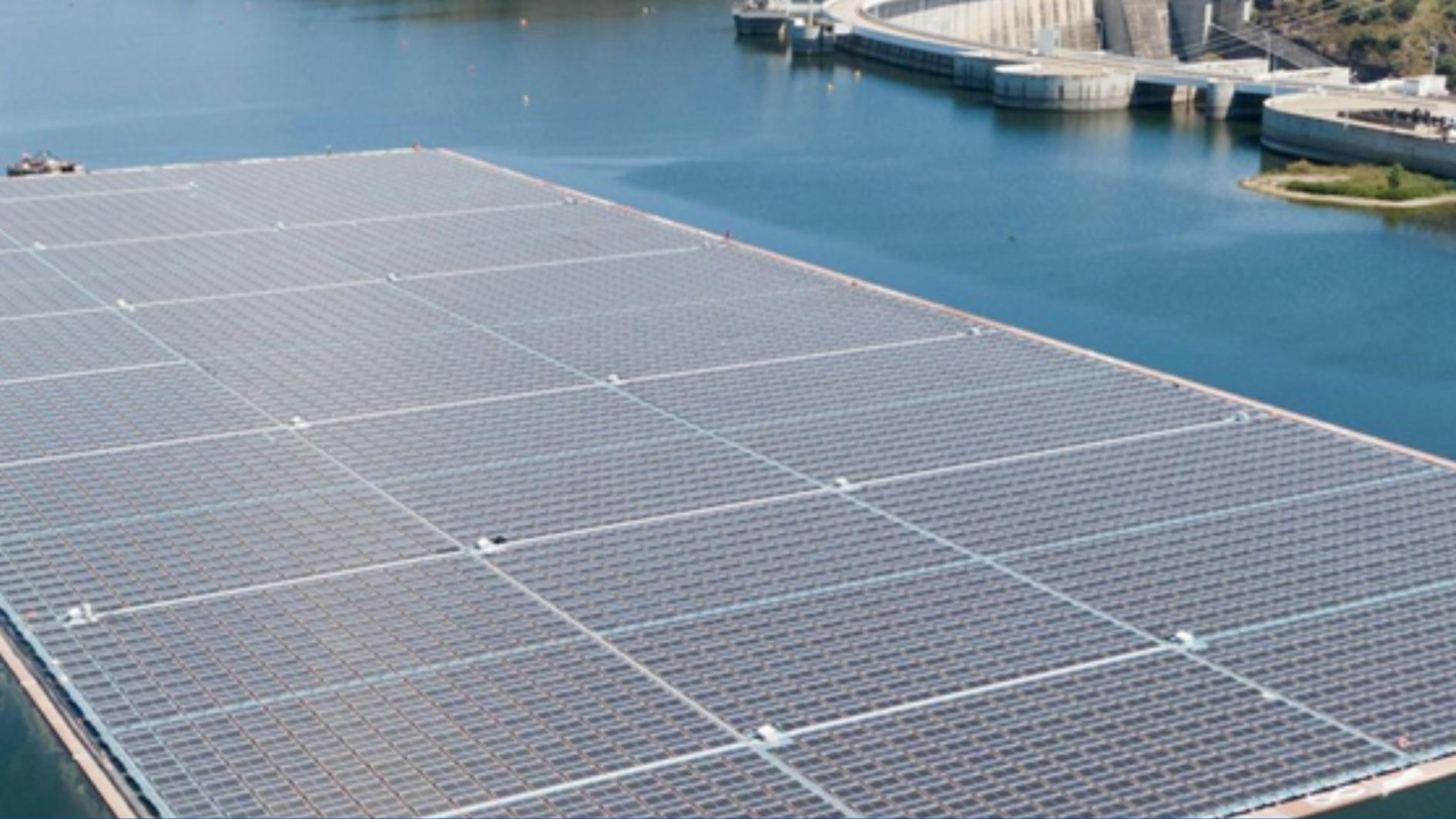
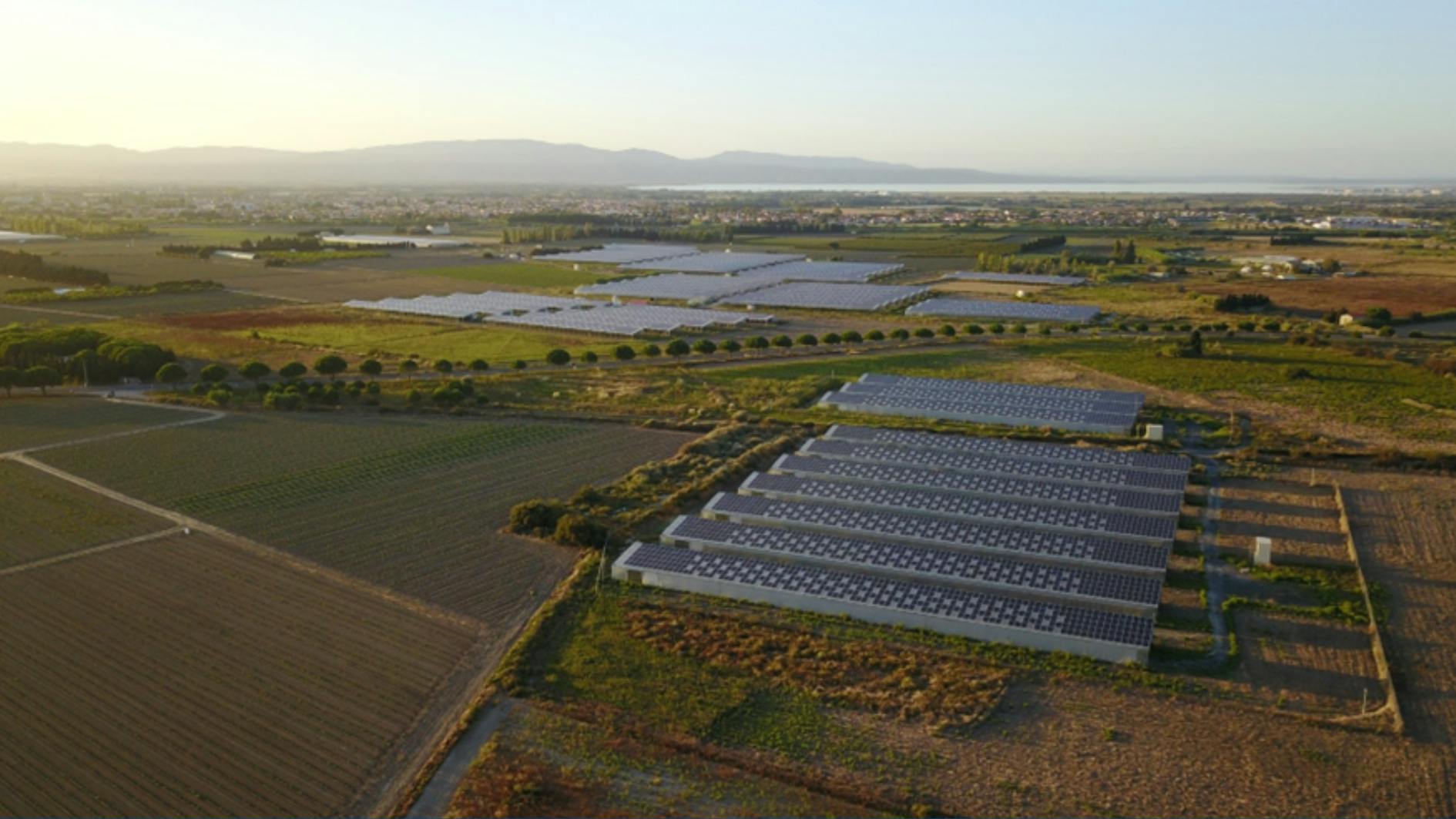
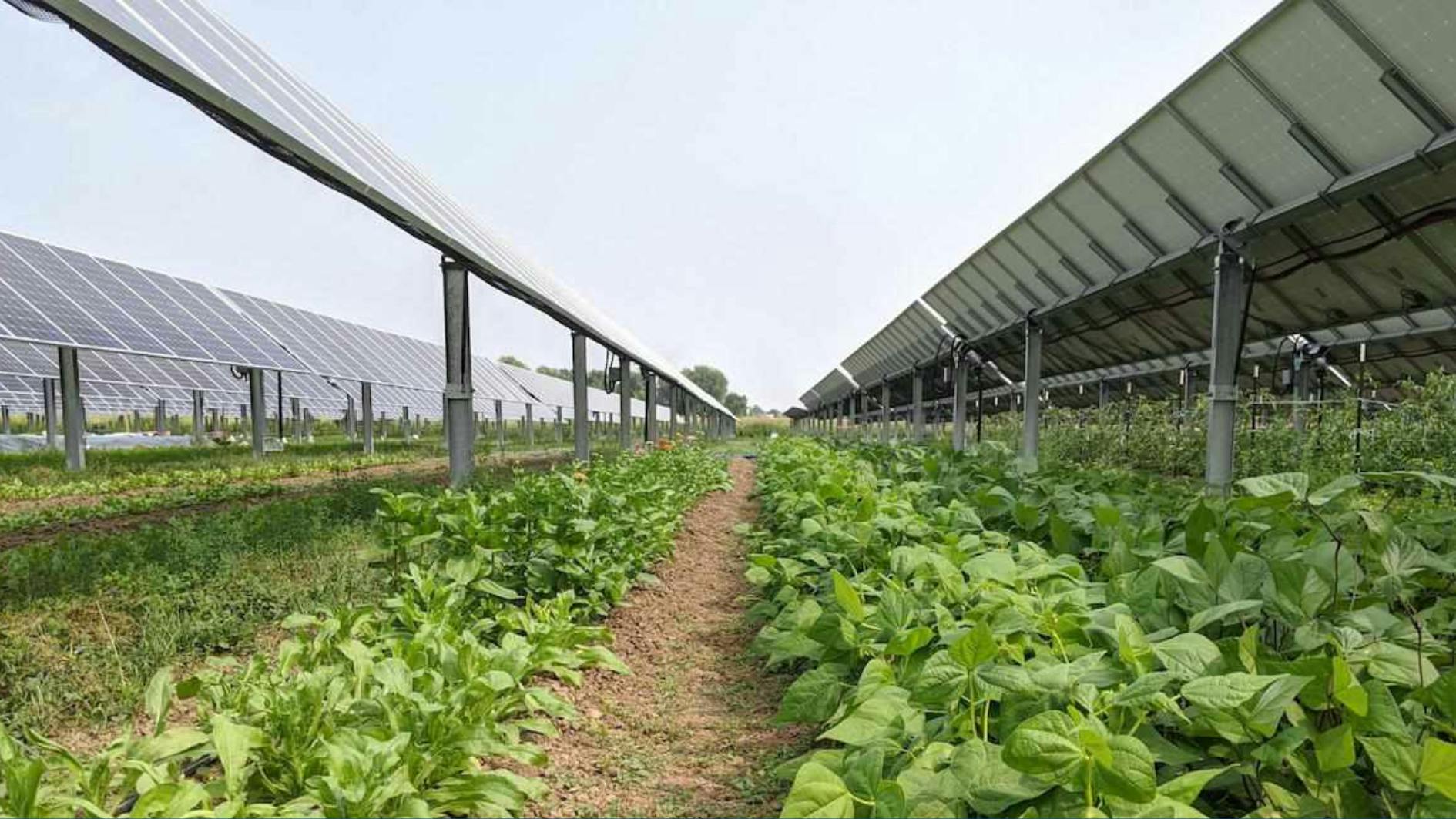
Aquavoltaics
Silvopastoral
Crop-AgroPV
Maintenance Challenges
Maintaining Agri-PV installations comes with its unique set of challenges. Exposure to the elements can result in dust accumulation on solar panels, reducing their efficiency. Additionally, the proximity to agricultural activities introduces the risk of debris, pollen, chemicals (e.g. fertilizers) and other contaminants affecting the solar panels. Cleaning and maintenance, therefore, become pivotal to ensuring optimal performance.
Expected Contaminants
1. Soiling Accumulation:
Dust settling on solar panels can reduce their efficiency over time. Dust accumulation not only decreases energy production but also casts shadows on crops below when using bifacial modules.
Anti-soiling coatings can be used to reduce the soiling buidup and keep the solar panels cleaner between cleanings.
2. Bird Threats:
Birds can pose a threat to both crops and solar panels. Droppings can damage solar panels (e.g hotspots), while birds may disturb or consume crops.
Protective measures, such as physical barriers and non-intrusive deterrents like reflective surfaces and fake animals (e.g. hawks and snakes), should be implemented. Finding a balance between wildlife conservation and technology protection is essential to mitigate potential losses.
3. Chemical Contamination (Fertilizers, pesticides, and herbicides):
The use of chemicals in agriculture is a common practice and poses a contamination risk for the solar panels. Overspray from chemicals will land on the top and bottom of the PV modules and create a sticky layer that will speed up the buildup of soiling. Cleaning therefore becomes critical to the performance and lifetime of the PV plant. Careful management and sustainable agricultural practices should strike a balance between maximizing agricultural output and preserving the integrity of solar panels.
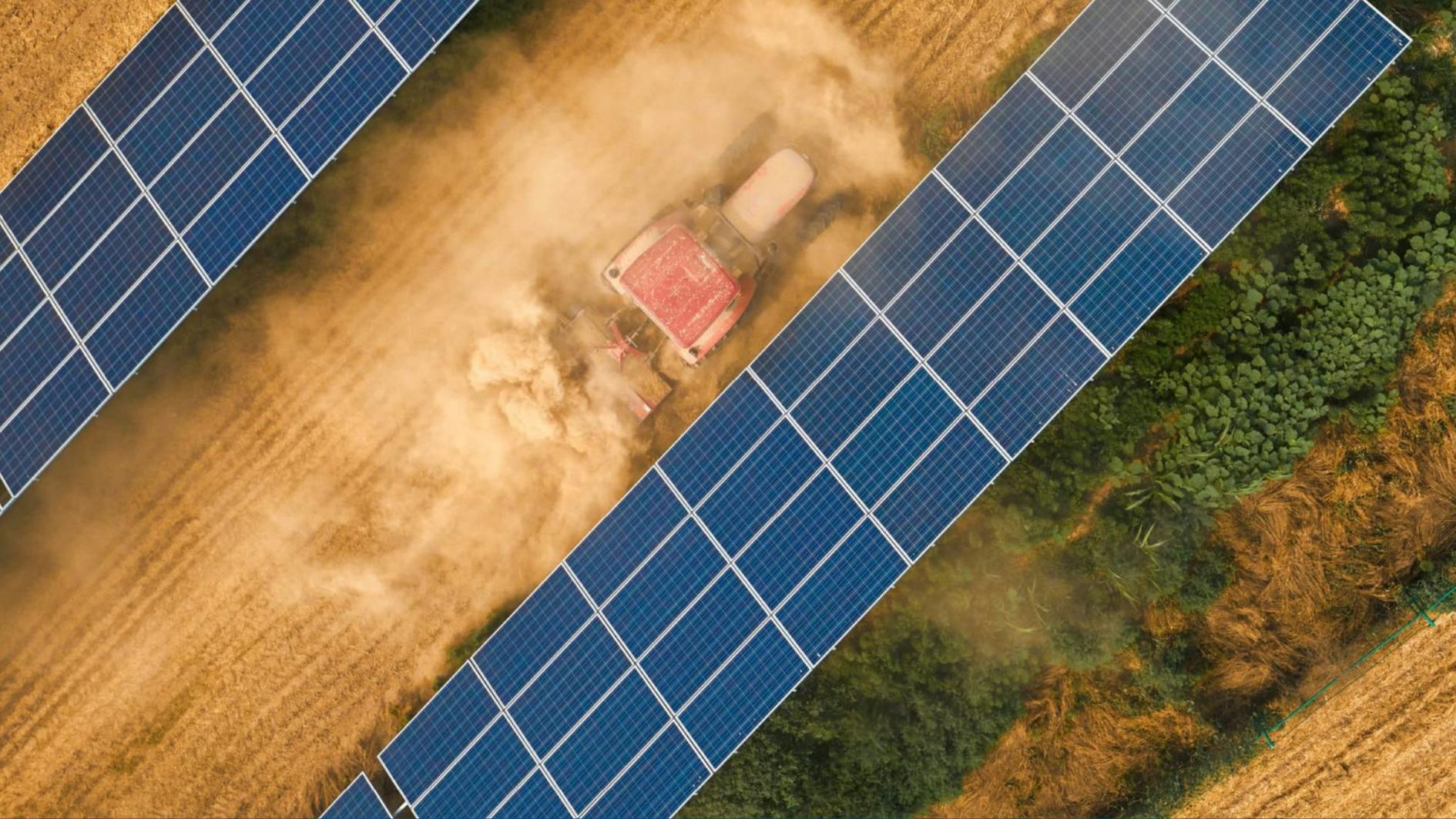
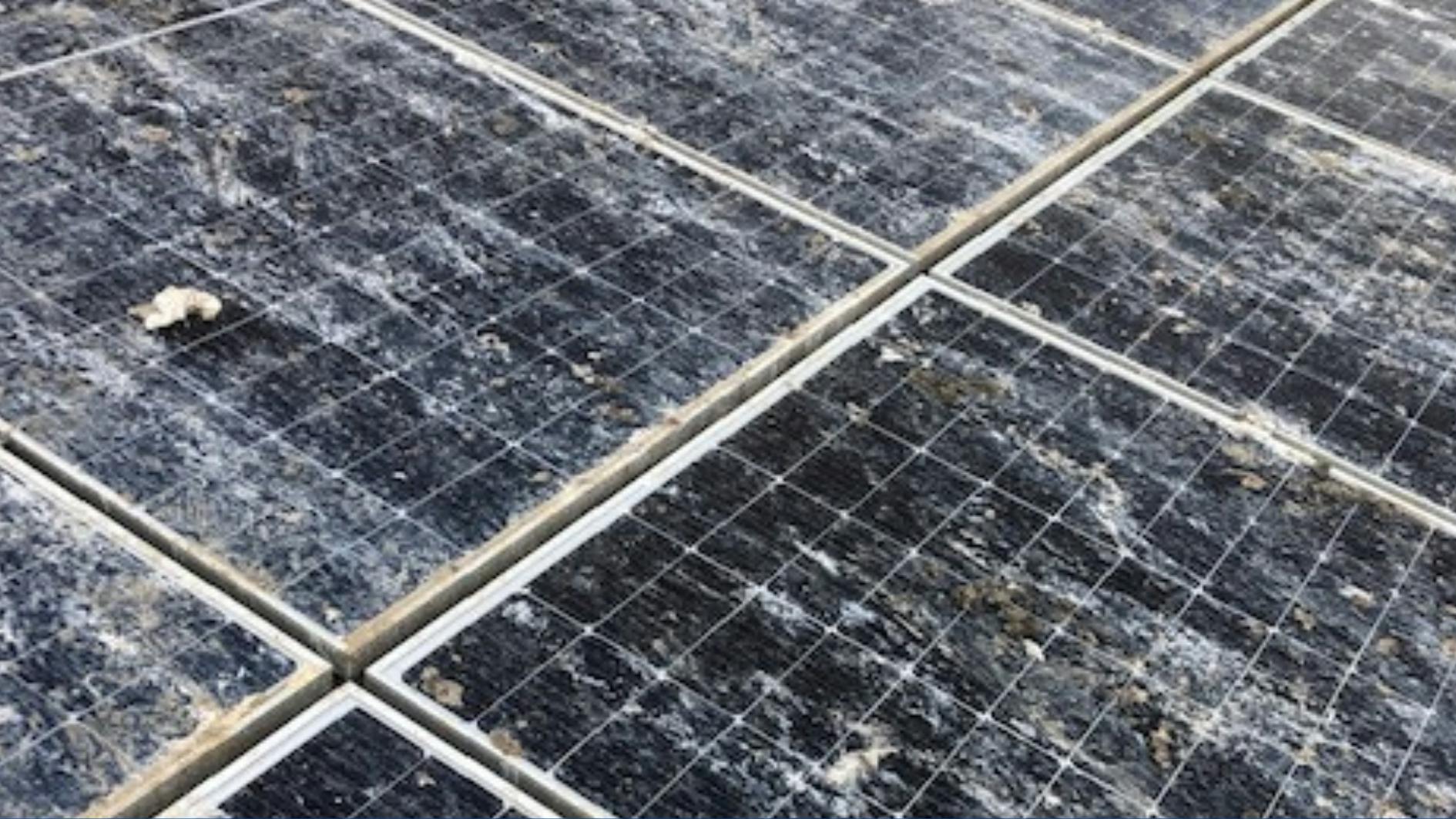

Dust
Bird droppings
Mineral deposits
Cleaning Difficulties and Solutions
Cleaning Agri-PV installations can present several challenges such as:
- Access to the modules
- Limited options for cleaning methods
- Harsh soiling and contaminants
Access to the modules is usually limited since the ground can be occupied with crops, the modules are commonly placed at higher heights to allow the use of machinery underneath or, in the case of floating plants, there is only water underneath the modules. These limitations will make use of cleaning equipment such as a brush on tractor almost impossible.
The modules are also usually grouped in smaller groups than normal making it much harder to use semi-automated cleaning methods such as robots.
Traditional cleaning methods such as brushes and water fed poles end up being the least intrusive and more flexible options.
Soiling and contaminants, such as dust, bird droppings, fungi, chemicals and pollen will also increase the difficulty of the traditional method of cleaning with just water. Here is where innovative solutions, such as Chemitek's solar certified and biodegradable cleaning agents, come into play. These solutions effectively remove soiling and contaminants without causing harm to the surrounding fauna and flora while brushing less and being more efficient in the use of water. They represent a breakthrough in Agri-PV maintenance, aligning with the ethos of sustainable practices. Easier and faster cleaning, less water consumed, increased performance and lower CO2 emissions while assuring net zero harm.
Anti-soiling Coatings for Enhanced Performance
In addition to the cleaning solutions, the use of anti-soiling coatings is another avenue for optimizing performance and better cleanings.
Chemitek’s Antistatic Solar Armor, an easy to apply antistatic and antiadherent coating, will reduce the soiling buildup and its adhesion to the modules. Being pH neutral, solvent-free and readily biodegradable assures that it is safe not only for the modules but also to the fauna and flora.
Conclusion
Agri-PV stands at the intersection of sustainable energy production and agriculture, presenting a model that harmonizes these two essential aspects of our modern World. To ensure the longevity and efficiency of these systems, innovative cleaning solutions like Chemitek's solar certified and biodegradable agents play a crucial role. As we continue to embrace agrivoltaic solutions, striking a balance between maintenance and environmental preservation will be key to reaping the full benefits of this innovative approach.
Do you have any suggestions or topics about the solar universe you would like to read here? Reach us by email!




